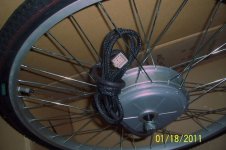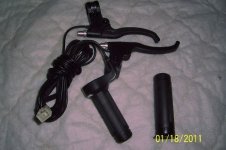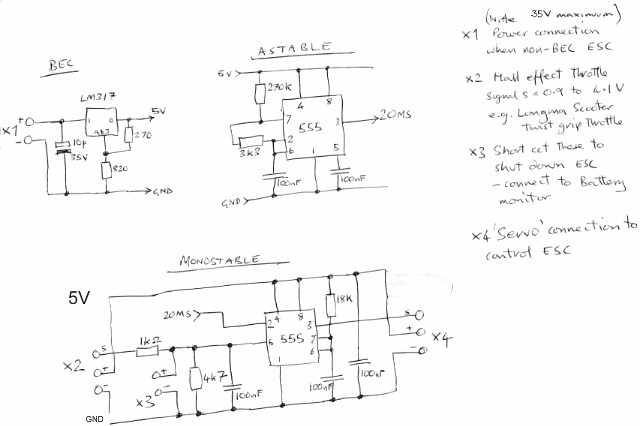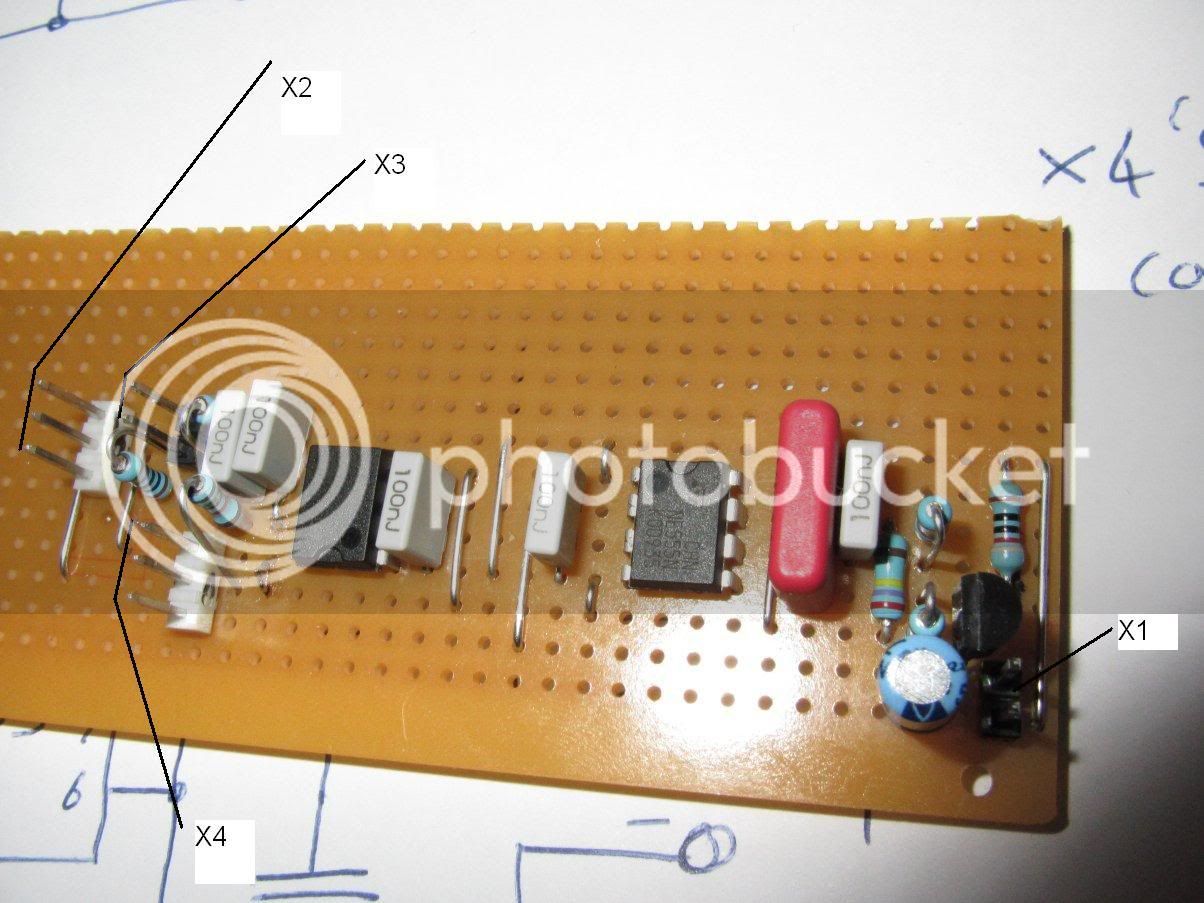Here is a circuit to connect a hall effect throttle (e.g. the longma twist grip sold for a few $ on ebay) to a radio control electronic speed controller.
It is a simple circuit, suitable as an early foray into electronics for those who have been frightened of it in the past!
It uses about 10mA current
includes a BEC (in case your ESC doesn't). If your ESC has a BEC in you can just leave that whole section off.
Output is a pulse every 20ms ranging from 0.7ms to 2.2ms in width
"Fairly" fail safe - total disconnection from hall throttle, and break in either the 5V wire or the signal wire will result in the motor stopping. disconnection of the GND wire alone will result in full throttle (the only fail-dangerous condition).
If you are worried - double up on the GND connections.
BEC part uses that old favourite the LM317 adjustable voltage regulator. With only 10mA load this can drop 30V without breaking sweat (that's 300mW) so I've specc'd a 35V electrolytic cap on the input. You can actually supply this from anywhere up your battery string from 8V to 35V.
ASTABLE part is a 555 timer configured in astable mode - signal 20ms should be a negative going pulse 250us wide every 20ms or so. Accuracy not essential here.
MONOSTABLE part puts the hall throttle signal into the 555 threshold input, so the output pulse width rises as the throttle signal voltage rises. This signal is passively pulled down for failsafe. Output pulse width is determined by the 18k resistor and associated 100nF capacitor. Considering that capacitor tolerances are not generally very tight, you may want to swap the 18k resistor for a slightly higher or lower value to get the pulse width just right. Basically, is the behaviour of the ESC acceptable? if it won't throttle down completely try a lower resistor; if you can't get full throttle try a higher value one. You'll be unlucky if the supplied values don't give full range ;^)
Here is the circuit put together on stripboard
There is, of course a dual 555 in one package called the 556 and it's probably cheaper and neater to use one of those - the component values stay the same but pin connections have to be translated. I just used what I had to hand.
It is easier to make and debug the circuit with the aid of a scope, but this one is simple enough to have a go without if you're feeling brave..... make the BEC first - ensure it's supplying 5V when the input is 8V and over. Then make the astable & confirm the 20ms timebase. Then make the monostable part.
Just to make clear what the various plugs are:
X1 is 8V to 35V supply for if your ESC does not have a BEC - you can connect this to the bottom few cells of your main battery. It only takes a few mA so the extra dreain on those bottom cells is negligible.
X2 connects to the hall throttle Signal, 5V and GND
X3 is a shutdown input. This is to allow a battery monitor (eg the celllog from HK - hint hint) to stop the motor from utterly discharging your lipo's... It is configured to connect to an "open collector" or dry contact.
X4 is the "servo drive" connection to the ESC Signal 5V and GND








